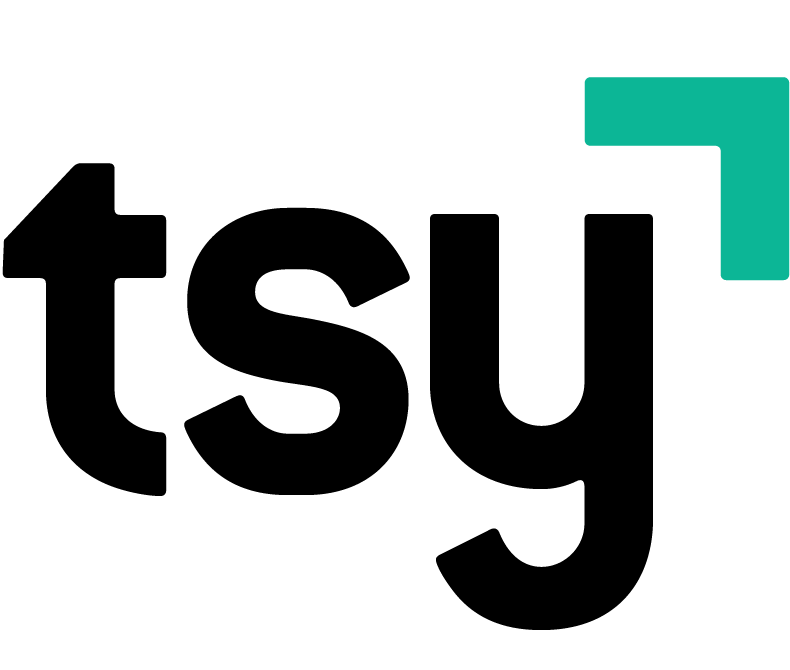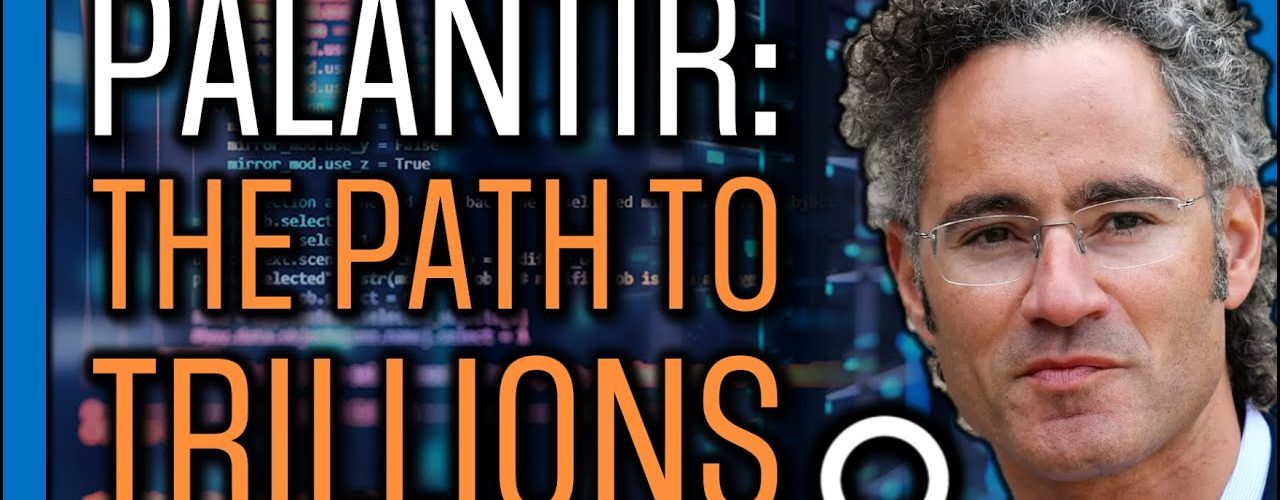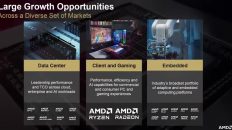Mentioned in Video:
- 🌐 My full resource library: https://www.tickersymbolyou.com
- ⚡ Investing in Disruptive Innovation Starts with Understanding It: https://www.youtube.com/playlist?list=PLEzjBEcw2qf2XH1nJe_HfHYoQVoMiJh-y
- 💸 Deep Dives Into My Favorite Growth Stocks: https://www.youtube.com/playlist?list=PLEzjBEcw2qf0fVhlK97B_HiJIe1rcOaC8
- 📊 Analyzing ARK Invest's Funds: https://www.youtube.com/playlist?list=PLEzjBEcw2qf1PEDVMm3DDGzYDtEf0LVEx
- 🤓 My Free Online ARK Fund Calculator: https://tickersymbolyou.com/ark-invest-etf-calculator/
- 📈 Learn What Moves the mARKets: https://www.youtube.com/playlist?list=PLEzjBEcw2qf24VE3iZB1Svm4Xh9FHbUi1
- 💡 My Best Investing Insights: https://www.youtube.com/playlist?list=PLEzjBEcw2qf1-G72whq7s9VmdpMraydg8
- Support the channel and get extra member-only benefits by joining us on Patreon: https://www.patreon.com/tickersymbolyou
🔥 #Palantir (#PLTR) could have a $1T market cap one day. #CathieWood holds over $500 Million in Palantir stock between #ARKInvest funds like #ARKK and #ARKW. Let me explain what Palantir REALLY does and I'll show you how it can scale into new markets and why PLTR stock could be one of the best stocks to buy now.
Video Transcript:
[00:00:16.760]
Humanity is undergoing a massive transformation. More and more the foundations of our future are being defined by data, and more and more decisions based on the digital world are reshaping the physical one. Today, gathering all the right data in one place is no easy task. Generating meaningful insights based on that data is even harder, and bringing those insights back to the physical world is harder still. But if the foundations of our future are defined by data,
[00:00:46.770]
why are most companies still so bad at understanding it?
[00:00:50.410]
And even worse, at turning that understanding into meaningful results. I'd like to share my future vision of a company called Palantir, a company that helps the biggest institutions make data a part of their foundation, helps people make meaningful insights based on this new foundation, and of course, leverage those insights to manage risks in making actful changes in the real world. To understand how Palantir can do this across every industry and every discipline, we first need to talk about the challenges with big data, artificial intelligence and the concept of a digital twin.
[00:01:28.300]
Hey there. My name is Alex, and I used to be a rocket scientist and radar engineer at MIT, where I focused on big data, artificial intelligence and automated decision support for government programs. The exact kind of work that Palantir helps some of their biggest clients do at scale through their Gotham platform. Palantir has another platform called Foundry, that's extending their reach to private institutions and even startups through their new Foundry for Builders program. Because Palantir's technologies are industry agnostic, I believe they can keep expanding downstream into new markets by eventually offering software products to more small and medium-sized businesses and maybe even individuals.
[00:02:08.200]
So in this episode, I'll cover the important things that I think Palantir is doing today and how they could scale to that trillion dollar valuation in the far future. If you enjoyed this type of research and analysis, consider liking this video and subscribing to the channel with all notifications turned on. That way, you'll be the first to know when I come out with new research regardless of how YouTube tunes its algorithm. Let's dive right into it. Palantir builds advanced data analytics software for government and other large institutions.
[00:02:38.200]
Palantir's software analyzes huge sets of data from many sources to help organizations make better decisions, often in near real time. These same institutions tend to have the hardest time with big data at scale because they were built well before the world went digital. So where I think Palantir really adds value is by helping these large, older companies quickly make what's called a digital twin of their organization. It's called that because it's the digital representation of their physical stuff. For example, the digital twin of a huge logistics company could look like a count of all of the assets it has at all of its locations, that updates when things are moved
[00:03:14.510]
in the real world. Everything else Palantir provides depends on this digital twin, so Palantir really has to get this right. To enable that, Palantir software actually needs to solve several key big data challenges, each of which are big enough to build entire companies around. Let me walk you through them. The first step is bringing all of a client's data to the right place or places. That means working with the client to identify the right data sources, build the right integrations and transport all that data from those sources to the right storage locations.
[00:03:45.790]
Initially, that could scare investors because it makes Palantir sound like a consulting company. But Palente has done a great job of making this mostly plug and play to the point where new clients can be stood up in a matter of days. That's one one reason their clients love them. They reduce the time to value from years to hours. There are serious challenges with this step because privileged or classified data needs to be stored in accredited spaces and can only be transported through certain channels and accessed by certain people, all of which can change over time.
[00:04:17.080]
By the way, that challenge isn't unique to the government. Think about medical records, financial records, or even just protected programs that big companies don't want every employee to know about or have access to. So, if only some people in an organization can or should have access to this data, that company has to be able to manage access and permissions to all the different pieces of it. In addition to that, data protocols and formats are always changing, so Palantir needs to be able to make secure fixes and updates to these connections over time.
[00:04:48.070]
That's one of the main features of their Apollo platform, which is the continuous integration and delivery software that powers Foundry and Gotham. Their Apollo platform can deliver automated updates without disrupting operations. Being able to roll out these software updates through even the most secure channels to the most locked down computers remotely is why Palantir can power mission critical operations. That's a huge differentiator because, as it turns out, not many companies can actually do this reliably and at scale. Okay, now that a client has the right data flowing to the right places through the right pipes with the right permissions,
[00:05:25.330]
that data needs to go through ETL, which stands for for Extraction, Transformation, and Loading. Data needs to get checked for errors, inconsistencies, cleaned up and reformatted. It also needs to be made searchable, usable in models and so on. Derived data might need to be created, like calculating total revenue from sales and prices, or calculating energy from measurements of power and time. If it's privileged data, it might need to get anonymized or encoded or tagged in a certain way. Or maybe the system needs to generate a separate audit log alongside that data.
[00:05:57.220]
The devil is in the details here, and these details vary company by company. Then, that extracted and transformed data needs to be stored somewhere for the rest of the software to load it and act on it. That's called data warehousing. And every big company also has different data warehousing requirements based on their corporate culture, their industry accreditation, compliance requirements and other constraints imposed by their own clients. More details, more devils. Remember, Palantir is doing this for some of the biggest enterprises on the planet. So they're pros at navigating through all of these extra hoops. Palantir deserves our attention as investors exactly because they automate these steps of data connection, aggregation, transformation, and storage in a secure, compliant and industry agnostic way, to help these giant companies make data a part of their foundation.
[00:06:45.520]
Palantir helps people make insights based on this new foundation through all of the other cool decision support tools that their platforms offer. Search, analytics, modeling and simulation, artificial intelligence, data visualization and reporting. Here's a quick example of how Palantir brings all of this together to empower clean energy companies and utilities.
[00:07:05.550]
At Palantir, we don't shy away from challenge. Consumers are demanding smarter, cleaner energy. To make the transition real, companies must rapidly digitize and use their data intelligently. Counter partners with energy suppliers to support ambitious clean energy targets. Our clients use our platform to minimize downtime, optimize maintenance and manage intermittency. In Foundry, our clients build digital twins of renewable assets. Once optimized digitally, they can steer assets in reality, generating more power. Today, we help our customers deliver clean, affordable electricity. Palantir proudly empowers energy companies and utilities to meet their most complex challenges.
[00:08:04.360]
There are plenty of companies that do the data analytics, visualization and reporting similar to the dashboards that Palantir provides. Instead, let's stay focused on the capabilities that I think really set Palantir apart. We already talked about their ability to rapidly digitize their clients businesses and build and interact with its digital twin. One way to interact with that digital twin is through modeling and simulation. In the wind turbine example, the company might want to look at the effects of different weather conditions on their turbines so they can do something as simple as run a simulation of a single turbine through different wind speeds and directions, or something as complex as hook their entire digital twin up to a global weather model and analyze how different weather conditions impact the power production of all their turbines put together, they can then seer the turbines in the digital twin to simulate the best angle for each turbine and see the differences in power generation.
[00:08:57.790]
The first notable thing about this is how easy Palantir makes it to do everything I just said due to their modular design and good graphic interface. In my opinion, good user interfaces are kind of like the SATs. Remember those? Nobody cares if you have a good user interface because that's what's expected. Everyone cares if you have a bad one. It's just a box that Palantir needs to check, and they do check it. The more impressive thing is that this connection between the digital and physical space is bidirectional, meaning if the simulation finds a better way to angle the turbine voids, a user can send that information directly to the turbine control systems and move them in real life or just output the set of instructions for a human to verify before doing this themselves.
[00:09:39.830]
This ability to hook into external systems, whether they're command and control systems for wind turbines, or drones or communication systems like emails and texts means these digital systems can affect the physical world. Think about how confident a client has to be in Palantir software to allow it to connect directly to their wind turbine control system. There are a few more key capabilities that I want to quickly highlight before talking about how Palantir can expand into small businesses and the consumer market over the next decade. First, they already have out of the box use cases called archetypes.
[00:10:12.720]
These archetypes allow specific Palantir projects to get up and running fast by deploying a template that gets you most of the way there from the get go. Palantir is constantly expanding their set of out of the box solutions with the types of use cases that they're solving over and over across their clients. This is huge for winning new clients because Palantir can walk in and demonstrate real value in a matter of hours. Second, Palantir supports third-party models. What this means is someone ,whether it's an academic institution, research lab, or one of Palantir's customers, could make a better wind model that Palantir can then deploy to everyone that wants it.
[00:10:48.170]
When I worked at MIT, I got to work alongside the engineers at MathWorks, the creators of MATLAB on the same kind of stuff. We would help them refine different single processing models and functions, and then they'd update that package for all of their clients. When they worked with the engineers at Stanford on their machine learning code and pushed an update, I benefited from that as well. Whether you're a utility company managing wind turbines or a government agency managing airborne drones, you always want access to the latest and greatest wind models, even if they're not made by Palantir.
[00:11:19.910]
In this way, Palantir kind of acts as connective tissue across its clients, allowing an improvement from one company to propagate everywhere else that benefits from it. Just like MATLAB did for me at MIT. Speaking of Palantir acting as connective tissue, the third capability is Foundry's ability to create collaboration spaces between companies. Listen to this quick clip of the head of the Foundry program explaining how Palantir is thinking about this problem.
[00:11:45.020]
Even more important than reaching more users is connecting those users to each other. We're seeing that customers want to collaborate at a truly unprecedented rate. Health agencies with hospitals, manufacturers with suppliers, and in Foundry we treat this as fundamentally the same problem, whether you're working across organizations or working across functions within one. Effectively, industries are just another large, solid organization with a few additional constraints. And because of that, Foundry's approach is really unique and it can be compared to surface level collaboration tools like shared folders or chat.
[00:12:19.480]
It's more joint operation than just collaboration, and the way it works is that Foundry sets granular security controls at the data source level and provides a shared operational language, deontology as the parameter for engagement, and these parameters then flow seamlessly into all downstream business tools, bringing up users to focus on the problem at hand and effectively within the boundaries of Foundry work as one team. Equally important, the system is dynamic because security stances are constantly changing. Shared spaces can be used for ongoing collaborations like between suppliers and manufacturers, or they can be purpose built time-limited shared spaces that meet strict privacy requirements between organizations collaborating in this way
[00:13:02.510]
for the first time. We see the potential impact of Foundry's shared spaces primarily as resiliency and adaptability to change rather than just efficiency in the status quo. Challenges like electrification of cars or prevention of the next pandemic require a rapid evolution of how organizations securely share knowledge and change together.
[00:13:22.440]
Palantir's ability to create secure collaboration spaces across organizations is huge. Remember, we're not talking about emails and phones here. We're talking about organizations with very strict policies on information security, limited access data, legal and compliance standards, and so on. The more enterprise clients Palantir gets on their platform, the more I think will want to join it for this reason alone. Palantir is often criticized for relying on government contracts, but I think this is a big mistake. Thinking about volunteers platforms as this connective tissue between organizations means shareholders should want them to penetrate as much of the government sector as they can, not just to lock in those longterm stable contracts, but also to access the models, tools, and processes that most other companies simply can't access.
[00:14:08.610]
To me, that means Palantir benefits from serious network effects, and we want them to fill that network with as many hard use cases as possible upfront. With that said, let's talk about Palantir's future and how they could expand beyond their government and enterprise clients to small businesses and even individuals. They have to do this if they ever want to be a trillion dollar company. And I do think it's possible over the very long term. Palantir recently announced that it will roll out Foundry for Builders, which is an initiative to get early stage companies to use the Foundry platform as a subscription service.
[00:14:42.630]
Because of the way Palantir can help a company quickly build up its digital twin, I don't really see it having too much competition in this space. Most other solutions either focus exclusively on one aspect of business like customer relationship management or workforce management, or they only cover a small piece of Palantir's value chain like only focusing on data visualization and reporting. Palantir being able to offer an end-to-end solution for many different types of businesses make it a compelling option for any company that wants to do as much as they can, with as few different ecosystems and tools as possible.
[00:15:16.140]
Spoiler alert: that's every company, which means this is a real moat for Palantir. Also, once a company builds on top of Palantir, they'll be very hesitant to move away from it because they'll probably have to find multiple, expensive pieces of software to replace it. Palantir's Foundry for Builders program will focus on startups with high growth potential, starting with companies already connected to their existing clients, then move to the broader market. I think this idea of thinking about Palantir as connective tissue between organizations really has some merit, and I'm excited to see how their ecosystem of archetypes and models continues to evolve as a result.
[00:15:52.990]
Now let's talk about the ultimate market. What could a company like Palantir ever offer to an individual like you or me? Well, what if it treated meaningful collections of individuals as organizations? For example, what if Palantir came out with an Internet browser that learns all about you and pools you with users like you? Then it recommends content and commerce based on what's going on in your pools of people. It could be like Amazon, but for everything. Hey, people in your area are stocking up on toilet paper and soap.
[00:16:21.270]
Here are the closest stores with some left or a link to order some online. We think this may be linked to the following local news items. Here are other recommendations for things to read and do based on these insights. As you do different things like book, travel or buy a car or upgrade your phone, Palantir could dynamically adjust which pools of people you belong to and the types of recommendations it would make for you. What if Palantir integrated with a lot of other services and provided you with a universal login?
[00:16:49.650]
Kind of like how Facebook and Google do today. Then, when you log in with your Palantir credentials, it adds that data to your pool to make cross-service recommendations. Hey, people who like this show on Amazon Prime really love this movie on Netflix. Hey, people who downloaded that fitness app that you just downloaded ended up listening to these four playlists on Spotify more than anything else. Hey, people who subscribe to Ticker Symbol: You tend to be really, really ridiculously good looking. I'd pay a buck or two for that every month.
[00:17:18.780]
My point is, we'll never know what kind of large scale cross-platform pattern of life insights could be unlocked unless there was a company that could aggregate all of our data together and compare it to everyone else's, which Palantir is very capable of doing. Also, if there's one company I trust to keep all of my data safe, it's definitely Palantir. Comment below with your thoughts on these ideas. Would you subscribe to a service like that for a couple bucks a month? Do you have your own ideas for services that Palantir could offer individuals in the next five or ten years?
[00:17:49.120]
I'm excited to hear your thoughts. Palantir's next earnings call is only a few weeks away, so I'm gonna do a followup episode on their finances, how their business units are growing, the crazy amount of SPACs they're invested in, and all of the other things that we should go over when we focus on Palentir's stock. Comment below or tweet me @tickersymbolyou if you want me to cover anything else in that video, including things like Palantir's founders or more about their platforms and features. Likewise, I hope this episode helped you understand more about what Palentir does today and their path to expanding into new markets in the future.
[00:18:24.150]
If it did, let me know by investing in the like button and subscribing to the channel with all notifications turned on. Then you'll be notified as soon as my next Palentir video drops. And it's a great way to invest in the channel that invests in you. Until next time. This is Ticker Symbol: You. My name is Alex, reminding you that the best investment you can make is in you.
If you want to comment on this, please do so on the YouTube Video Here














